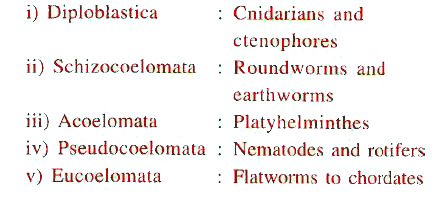Which of the following is correct ?
The sum of mole fractions of all the components in a solution is always unity
Mole fraction depends upon temperature
Mole fraction is always negative
Mole fraction is independent of content of solute in solution
The correct Answer is:A
To solve the question regarding the correctness of the statements about mole fraction, we will analyze each option step by step.
1. Understanding Mole Fraction:
- Mole fraction (denoted as μ) is defined as the ratio of the number of moles of a component to the total number of moles of all components in a solution.
- For a solution with components A (solute) and B (solvent), the mole fractions are defined as:
μA=nAnA+nB
μB=nBnA+nB
2. Sum of Mole Fractions:
- The sum of the mole fractions of all components in a solution can be calculated as:
μA+μB=nAnA+nB+nBnA+nB=nA+nBnA+nB=1
- This shows that the sum of mole fractions is always unity.
3. Analyzing Each Statement:
- Option A: "The sum of mole fractions of all the components in a solution is always unity."
- This statement is correct as shown in the previous step.
- Option B: "Mole fraction depends upon temperature."
- This statement is incorrect. Mole fraction is a ratio of moles, and the number of moles does not change with temperature. Therefore, mole fraction is independent of temperature.
- Option C: "Mole fraction is always negative."
- This statement is incorrect. The number of moles is always positive, hence mole fraction, being a ratio of positive quantities, is also always positive.
- Option D: "Mole fraction is independent of the content of solute in solution."
- This statement is incorrect. The mole fraction of a component does depend on the number of moles of that component, which includes the solute.
4. Conclusion:
- The only correct statement among the options provided is Option A: "The sum of mole fractions of all the components in a solution is always unity."
Final Answer:
The correct option is A.
- Mole fraction (denoted as μ) is defined as the ratio of the number of moles of a component to the total number of moles of all components in a solution.
- For a solution with components A (solute) and B (solvent), the mole fractions are defined as:
μA=nAnA+nB
μB=nBnA+nB
- The sum of the mole fractions of all components in a solution can be calculated as:
μA+μB=nAnA+nB+nBnA+nB=nA+nBnA+nB=1
- This shows that the sum of mole fractions is always unity.
- Option A: "The sum of mole fractions of all the components in a solution is always unity."
- This statement is correct as shown in the previous step.
- Option B: "Mole fraction depends upon temperature."
- This statement is incorrect. Mole fraction is a ratio of moles, and the number of moles does not change with temperature. Therefore, mole fraction is independent of temperature.
- Option C: "Mole fraction is always negative."
- This statement is incorrect. The number of moles is always positive, hence mole fraction, being a ratio of positive quantities, is also always positive.
- Option D: "Mole fraction is independent of the content of solute in solution."
- This statement is incorrect. The mole fraction of a component does depend on the number of moles of that component, which includes the solute.
- The only correct statement among the options provided is Option A: "The sum of mole fractions of all the components in a solution is always unity."
The correct option is A.
Topper's Solved these Questions
- SOME BASIC CONCEPTS OF CHEMISTRY BOOK - AAKASH INSTITUTE ENGLISHCHAPTER - SOME BASIC CONCEPTS OF CHEMISTRY EXERCISE - ASSIGNMENT SECTION B (Objective Type Questions (One option is correct))
25 Videos
- SOME BASIC CONCEPTS OF CHEMISTRY BOOK - AAKASH INSTITUTE ENGLISHCHAPTER - SOME BASIC CONCEPTS OF CHEMISTRY EXERCISE - ASSIGNMENT SECTION C (Objective Type Questions (More than one options are correct))
11 Videos
- SOME BASIC CONCEPTS OF CHEMISTRY BOOK - AAKASH INSTITUTE ENGLISHCHAPTER - SOME BASIC CONCEPTS OF CHEMISTRY EXERCISE - TRY YOURSELF
60 Videos
- SOME BASIC CONCEPT OF CHEMISTRYBOOK - AAKASH INSTITUTE ENGLISHCHAPTER - SOME BASIC CONCEPT OF CHEMISTRYEXERCISE - ASSIGNMENT( SECTION - D) Assertion-Reason Type Questions
15 Videos
- STATES OF MATTERBOOK - AAKASH INSTITUTE ENGLISHCHAPTER - STATES OF MATTEREXERCISE - ASSIGNMENT (SECTION-D)
14 Videos
Similar Questions
Which of the following are correct ?
View SolutionWhich of the following are correct
View SolutionWhich of the following are correct?
View SolutionWhich of the following are correct
View SolutionWhich of the following are correct ?
View SolutionWhich of the following are correct?
View SolutionWhich of the following are correct statements?
View SolutionWhich of the following are correct ?

View SolutionWhich of the following are correct?
View SolutionWhich of the following are correct :
View Solution